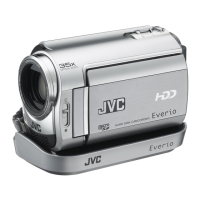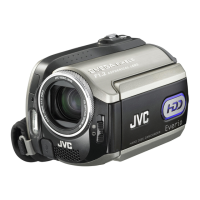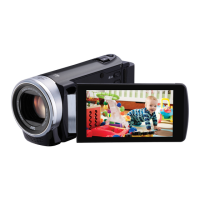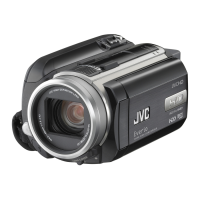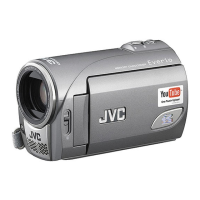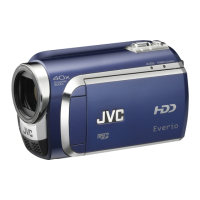Inserting an SD Card
When a commercially available SD card is inserted, recordings can still be
made
to the card without stopping when the remaining recording time on the
built-in memory runs out.
“ SEAMLESS RECORDING ” (A p. 88)
Depending on the setting of the recording media, recording can be made to
the SD card without using the built-in memory.
“Types of Usable SD Card” (A p. 9)
“Approximate Video Recording Time” (A p. 49)
1
Open the terminal cover.
.
2
Close the LCD monitor to turn off this unit.
3
Insert an SD card.
.
Warning
0
Make sure not to insert the SD card in the wrong direction.
It may cause damage to the unit and SD card.
0
Before inserting or removing the SD card, close the LCD monitor and
ensure that the POWER/ACCESS lamp goes off.
0
Do not touch the metal contact area when inserting the SD card.
Memo :
0
Both videos and still images can be recorded on one SD card. It is
recommended
to confirm the video operation of the SD card before usage.
0
To use a new SD card, or SD card used on other devices, it is necessary
to format (initialize) the SD card using “FORMAT SD CARD” from the
“SETUP” menu.
“ FORMAT SD CARD ” (A p. 99)
Removing the Card
Push the SD card inward once, then pull it out straight.
.
Types of Usable SD Card
The following SD cards can be used on this unit.
Operations
are confirmed on the SD cards from the following manufacturers.
0
Panasonic
0
TOSHIBA
0
SanDisk
SD Card
.
0
This unit supports 256 MB to 2 GB SD cards.
0
Use a Class 4 or higher compatible SD card (2 GB) for video recording.
SDHC Card
.
0
Use
a Class 4 or higher compatible SDHC card (4 GB to 32 GB) for video
recording.
SDXC Card
.
0
Use a Class 4 or higher compatible SDXC card (Max. 128 GB) for video
recording.
Getting Started
9

